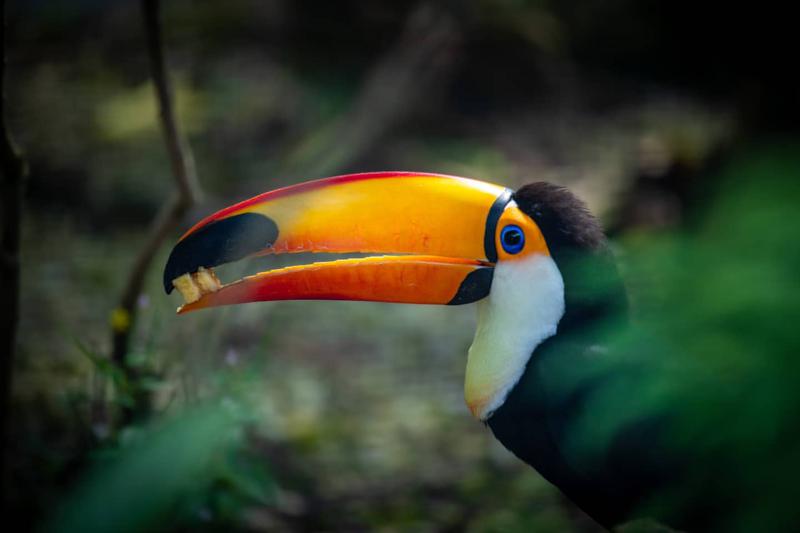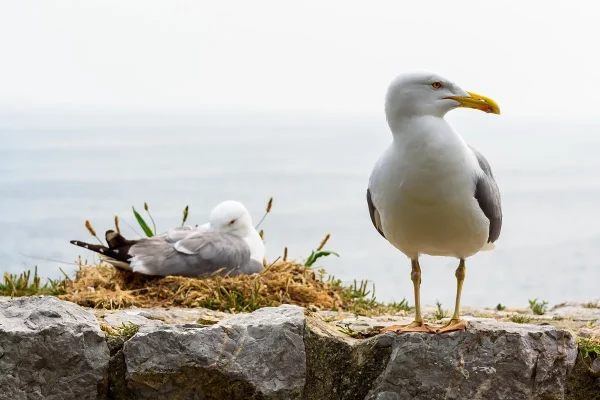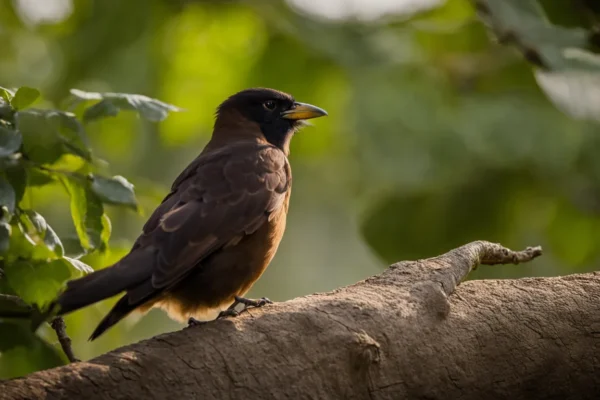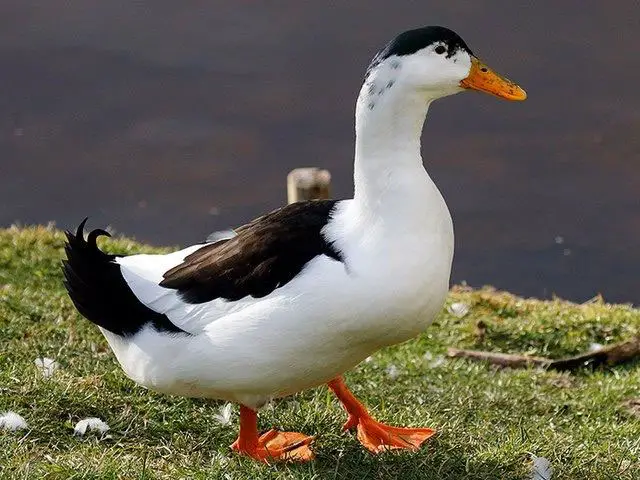There is a long list of birds in the avian kingdom that have orange beaks; it is a frequent characteristic. Therefore, it makes sense if you’ve come here trying to identify a species that you’ve observed to have an orange beak, also known as a bill. Carotenoids, pigments found in the food the birds eat, give their bills their beautiful color.
Then why are the beaks of certain birds orange? What causes this to be the case? We’ll examine the orange coloring and its evolutionary significance. A list of the most remarkable birds with orange beaks will also be provided.
Is there a black bird with an orange beak that you may have seen? or an orange-beaked white bird? Perhaps you’re curious to learn more about something you saw at a zoo or bird collection. To help you learn more about the species you observed, we’ve divided the list into the main colors of the bird’s plumage.
Why Are the Beaks of Birds Orange?
Orange beaks are more common in bird species that eat food that has a high content of carotenoids, suchberries. The body’s tissues absorb the pigments and store them there. Carotenoids not only affect the color of a bird’s beak but also strengthen its immune system. Thus, it is possible to associate healthy birds with brilliant beaks.
This is crucial when it comes to bird breeding season. Males may be selected over females whose beaks are duller. Bright orange beaks are a sign of excellent fecundity because they indicate good fitness. On the other hand, during the mating season, the health and color of a male’s beak might reveal his supremacy in fights or territorial conflicts.
TocoToucan

One huge species of toucan is called the Toco, or gigantic toucan. They are found in Brazil, Paraguay, and Boliva, among other parts of South America. Its plumage is jet black elsewhere, with a striking white neck patch just below the beak.
This species’ favored habitat is wide savannah and wooded habitats. Its remarkable seven-inch-long beak is mostly hollow and made of keratin, which gives it a light weight in spite of its unusual size.
The primary food source for Toco Toucans is fruit, to which their beaks are well-fitted. However, they will also eat frogs, little birds, and reptiles.
Crested Auklet

The Crested auklet is a stocky, black-brown bird with amazingly pale eyes that is very tiny for a seabird. It goes by the other name Whiskered auklet because of its “romantic,” floppy black plume over its beak and a light whisker of feathers above its eye.
The peculiar feature of its eye-catching orange bill is its slanted or raised mouth, giving the impression that the animal is grinning!
Due to its sociable nature, this species breeds and nests in large colonies on rocky coasts, especially near islands. In the open sea, it forages for tiny fish and aquatic invertebrates. Alaskan and eastern Japanese coasts are home to crested auklets.
Common Blackbird

The food of the local population determines whether the common blackbird has an orange beak or a brilliant yellow one. a common and amiable plant that is well-known in gardens throughout North Africa, Europe, and certain regions of Asia. It was brought to several regions of Australasia, where it is now present.
The females and youngsters of this species have brown plumage and a duller beak, while only the males have yellow-orange bills and dark black plumage. Blackbirds are common in both urban settings, such as parks and backyards, and forested regions.
This species is omnivorous and sings a lovely melody that is unique to those who have grown up with it. It eats on the ground.
Royal terns

Only the coastal regions of southern North America, Central America, and the northern and south-eastern regions of South America are home to this very big species of tern. Its white coloring gives it a seagull-like appearance, and its beak is long, slender, and sharply pointed.
Royal terns glide high over the open ocean or within bays and inlets to look for fish, which is their primary food source. This species is gregarious and is often seen in mixed groups with other bird species on beaches.
Mute Swan

Throughout Europe, a portion of Asia, and some regions of North America, mute swans are widespread. It is an enormous bird with pristine white plumage and a long neck, which are its defining features. A black “knob” is seen at the tip of the beak in adult birds.
Mute swans may be seen near and on a variety of freshwater and saltwater bodies of water. They are known to be very territorial and hostile against other waterfowl in the area, as well as sometimes at humans if they feel threatened. They are regarded as invasive species in several places.
Cattle Egret

Compared to most other heron species, this one is larger and has a shorter neck. Cattle egrets are seldom seen standing in streams, although they are often seen in broad spaces like fields. Its popular name comes from the fact that it often feeds on the grass around grazing cattle and sometimes climbs atop them to catch insects.
The striking golden plumes of feathers on the head and neck characterize cattle egrets. This species is indigenous to Africa, where it coexists with a variety of grazers, including rhinos and camels, for food. I was brought to North America and have since traveled quickly around the continent. On freshly plowed fields, it sometimes forms enormous clusters around tractors.
Black-and-white Atlantic Puffins

The Atlantic puffin is a well recognized seabird that is both adorable and instantly recognizable to people worldwide. Its sleek black and white plumage contrasts sharply with its brilliant orange, yellow, and grey stripes on its beak, orange legs, and feet.
In the North Atlantic, it may be found on islands and on rocky cliffs during the spawning season. Puffins withdraw to the open sea during the winter.
The small, stumpy wings of Atlantic puffins make it difficult for them to fly great distances, but they work well as flippers while they’re submerged fishing.
Puffins, like other seabirds, apply oil to their feathers using their preen gland to weatherproof and buoyantly coat them.
Puffins are threatened by a number of factors, including as exotic species predation, contaminated water supplies, altered food sources, and climate change. For this reason, the IUCN (International Union for Conservation of Nature) has classified this species as Vulnerable.
American Robin

The American robin is a well-known, orange-chested bird that may be seen across North America, mostly in backyards and urban settings. Additionally, it inhabits more untamed environments like Alaska’s high woods.
The American robin is a migratory bird that spends the full year in certain places and migrates to other locations, mostly in central North America. These robins gather worms, beetles, and other insects from the ground to eat, much like other members of the Turdus genus. They’ll eat berries and other fruits as well.
Greylag Goose

All around Eurasia, this beautiful geese with pink-orange legs and a beak is widespread. Its plumage ranges from white to light grey to dark grey, and it has a hefty form.
Greylag geese are mostly found in wetland habitats, such as lakes and marshes, however they are now becoming more common in European cities and parks. During the winter, individuals that breed in the northern regions of Eurasia travel even farther south.
This species is terrestrial feeders; in the hard winter months, it often choose grass and crops for its diet.
Zebra Finch

Zebra finches are little, harsh-weather birds of the Australian interior that have stumpy, dark orange beak. Although the majority of their plumage is gray, there are lovely buff and golden patches along with dot and stripe patterns.
This species will sing loudly and raucously as they feed in huge groups. It has been brought to Puerto Rico and Portugal. Their primary food source will be grass seed, which they expertly crack open with their uniquely designed beak.
Brown-headed Barbet

The Brown-headed barbet is a peculiar-looking green barbet with a pink-orange beak and a striking brown head that is surprisingly difficult to see in the wild. They make a variety of intriguing calls and are more often heard.
This species is often found in gardens and somewhat dry forests in parts of Sri Lanka and India. Nesting in tree hollows, brown-headed barbets mostly consume fruit and insects as food.
Eclectus parrot

This species’ male individual is distinguished by his stunning emerald green plumage and striking yellow-orange beak. The females are quite different, having a black bill and a vivid crimson red color!
Eclectus parrots are found in the wild in northern Cape York and New Guinea. They have short tails for a parrot species. They may often be seen soaring above woodlands in the early morning hours and squawking loudly.
Birds that have been released into the wild or escapees that were kept as pets are often seen in different parts of the globe.
Northern Cardinal

It is believed that this species often visits backyards in eastern North America. It is also widespread in the southwest region of North America and some areas of Mexico. This species is readily recognized by its stunning dusty red plumage, long tail, and crest.
Being a gregarious species, northern cardinals are often seen in couples or small groups. They like heavily forested places where they may readily be disturbed by fleas.
American Goldfinch

The American Goldfinch, one of the most widespread backyard birds in the United States, with striking yellow body and complementary black wings. The females and non-breeding males of this species have duller coloring, while the males have the brightest plumage and the most conspicuous orange beak.
Extremely acrobatic, this species clings dangerously on thin branches and seed heads in order to get food. They may sometimes forage in big groups in a sociable manner. The preferred habitats of American Goldfinches include open woodland regions, scrublands, and floodplains.






